|
Town |
Avg Resale PSF (2015) |
Avg Resale PSF (2025) |
10-Year Change |
Notable Upgrades |
|---|---|---|---|---|
|
Ang Mo Kio |
$930 |
$1,520 |
+63% |
CRL, transport hub, new BTOs |
|
Toa Payoh |
$970 |
$1,650 |
+70% |
NSC, town centre, SERS |
|
Marine Parade |
$1,150 |
$1,950 |
+69% |
TEL, coastal renewal |
|
Bukit Merah |
$1,300 |
$2,200 |
+69% |
GSW adjacency, SGH Master Plan |
Singapore 2030: Rejuvenation of Existing Towns
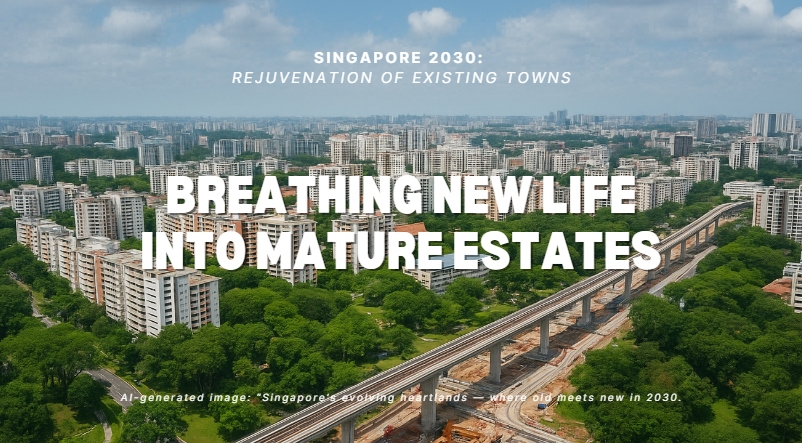
If you’ve read Singapore 2030: Redevelopment Areas That Will Redefine Prime Living, you already know how Singapore is giving old land a brand-new story. But this next part is closer to home — literally.
Today, we’re not talking about tearing down. We’re talking about renewal — how towns like Ang Mo Kio, Toa Payoh, and Marine Parade are quietly evolving— future-proofing entire neighbourhoods while keeping their heritage and community soul intact.
These are the places many of us grew up in… and they’re about to surprise us again.
Because in Singapore, “mature” doesn’t mean aging — it means ready for rebirth.
As part of the Singapore Concept Plan and Long-Term Plan Review (LTPR), the next five years (2025–2030) will bring an accelerated wave of rejuvenation across mature towns — guided by smart planning, sustainability, and mobility.
And for property owners and investors, this renewal means quiet capital growth where others see stability.
Why Rejuvenation Matters in 2025
Singapore’s housing pipeline is shifting. The Government’s land supply strategy now emphasises redevelopment and renewal over expansion.
Instead of building entirely new towns, URA and HDB are re-energising older ones through upgraded amenities, new transport lines, and community-centric redevelopment.
This approach creates a powerful investment equation:
- Older towns carry familiar emotional value and established infrastructure.
- Injecting new connectivity and retail anchors increases convenience and rentability.
- The result: older estates suddenly enjoy value uplift without losing their identity.
In essence, rejuvenation is redevelopment from within.
Ang Mo Kio — A Town Reinventing Mobility
Ang Mo Kio, one of Singapore’s first-generation estates, is now at the heart of the next transport evolution.
By 2030, the Cross Island Line (CRL) will link Ang Mo Kio to hubs such as Bright Hill, Pasir Ris, and Clementi, turning this mature town into a high-connectivity midpoint.
Key projects include:
- Ang Mo Kio Integrated Transport Hub (1.3694°N, 103.8481°E) — under construction, seamlessly connecting MRT, bus, and commercial facilities.
- Upgraded town centre with barrier-free access, green decks, and cycling paths connecting to the Central Corridor.
- New BTO launches near Kebun Baru and Mayflower MRT offering fresh supply within an old framework.
For upgraders, this means access to central conveniences without CCR prices — and for investors, it means rising rentability as the town modernises its mobility core.
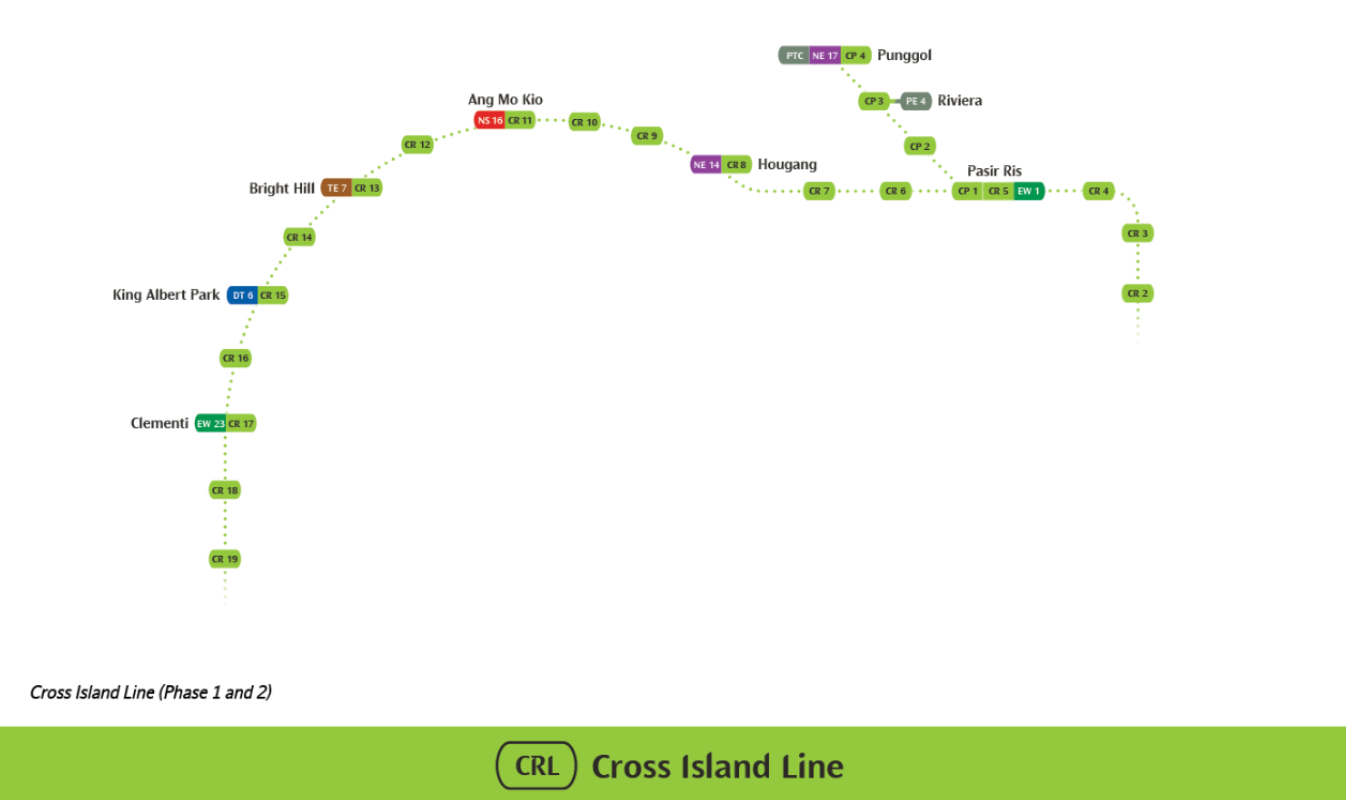
Source: lta.gov.sg/
Toa Payoh — The Comeback of a Pioneer
Singapore’s oldest HDB town, Toa Payoh, is experiencing one of its biggest makeovers since the 1970s.
Located just north of the city (1.3333°N, 103.8500°E), the estate is being revitalised through:
- Selective En Bloc Redevelopment Scheme (SERS) projects around Lorong 4–8
- The Toa Payoh Integrated Development (community club, sports hall, library, and new retail)
- New pedestrian walkways and the upcoming North–South Corridor (NSC) improving accessibility to Orchard and Marina Bay
URA’s plan preserves Toa Payoh’s heritage grid while updating its livability. When the NSC opens, residents can reach Orchard in minutes — effectively relinking Toa Payoh to the city core.
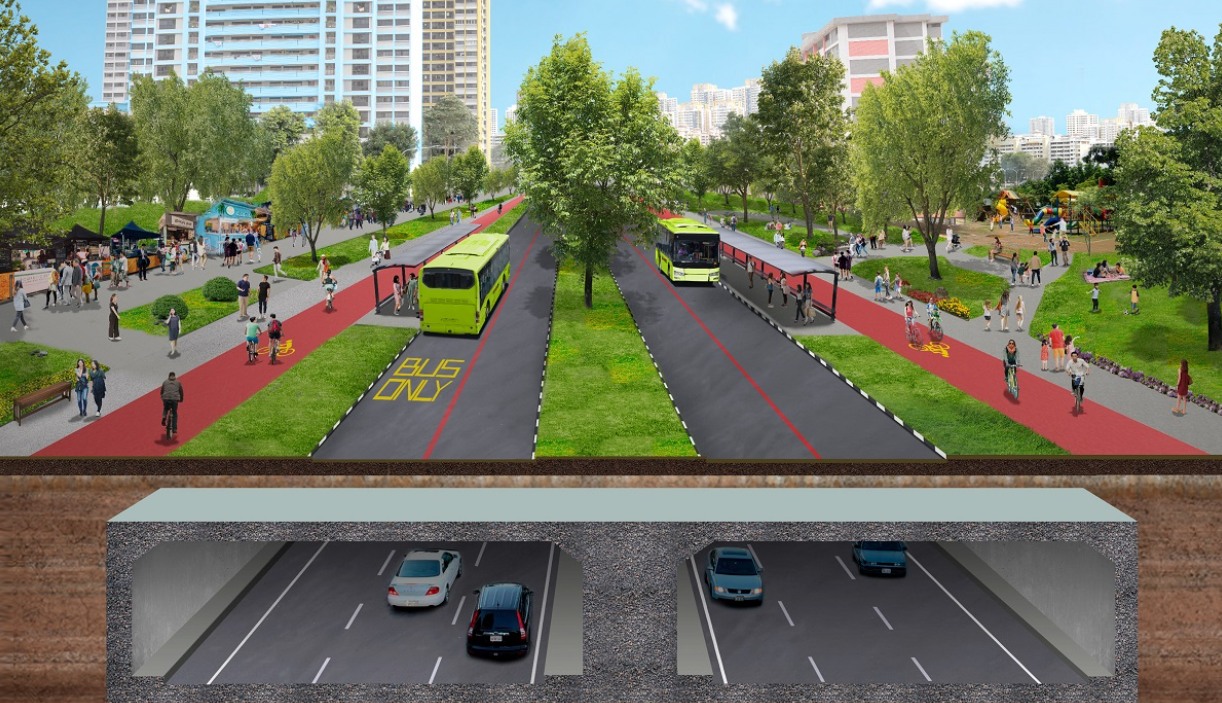
Source: lta.gov.sg/
Marine Parade — From Coastline Charm to Connectivity Powerhouse
Marine Parade has always carried prestige, but for decades, it was an MRT “blind spot.” That changes soon.
The Thomson-East Coast Line (TEL) will add Marine Terrace, Marine Parade, and Siglap stations by 2026, finally linking this mature coastal district directly to Marina Bay, Orchard, and Woodlands.
Key ongoing rejuvenations:
- Marine Parade MRT (1.3020°N, 103.9053°E) integrating with Parkway Parade and Katong retail belt
- East Coast Park Connector enhancements adding new cycling bridges and sea-facing promenades
- Upgraded HDB precincts under the Neighbourhood Renewal Programme
This combination of coastal living and central accessibility positions Marine Parade as one of the most underrated growth stories in Singapore’s east.
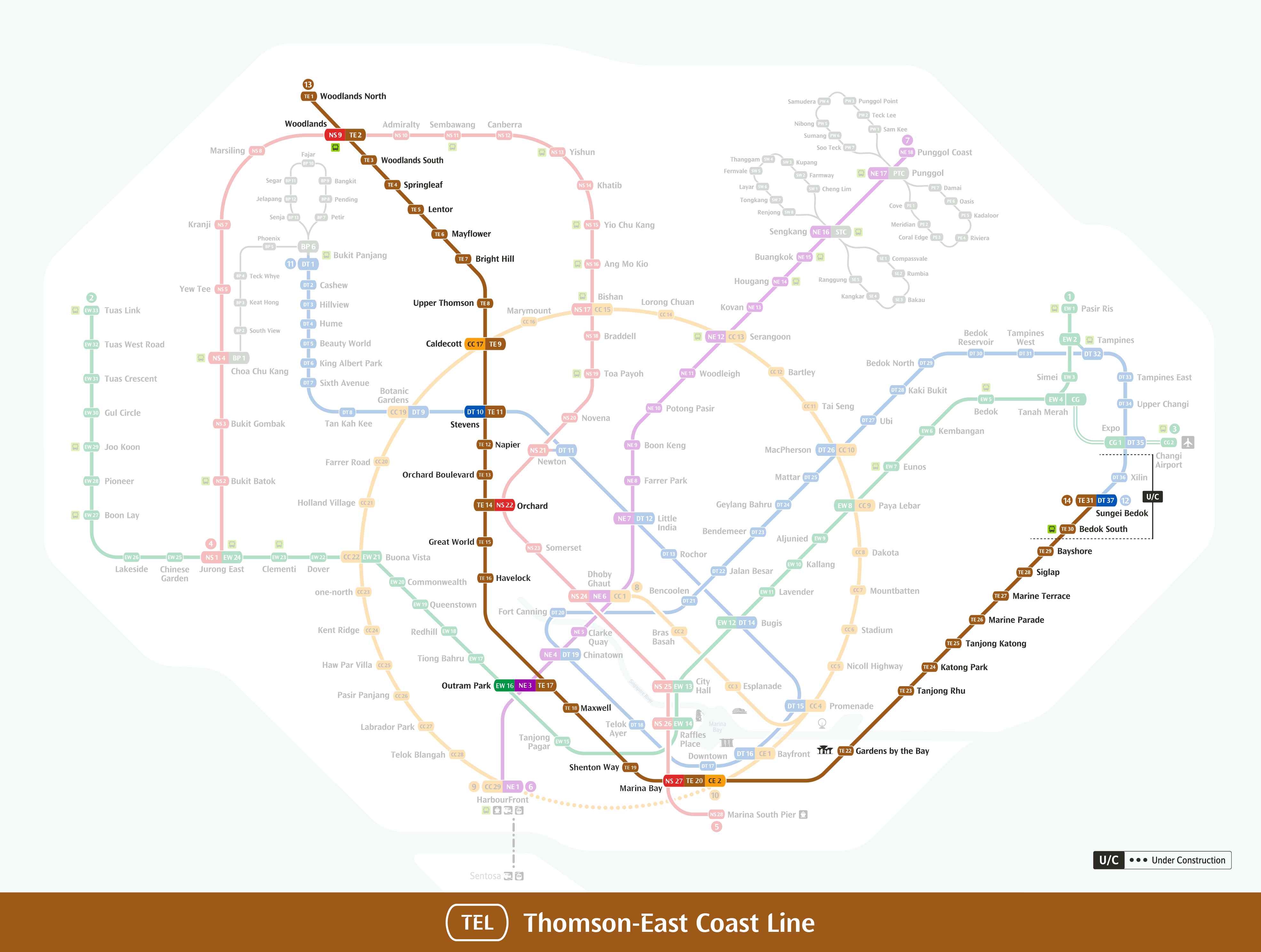
Source: lta.gov.sg/
Bukit Merah and Queenstown — Mature Neighbours, Modern Appeal
URA’s 2025 updates reveal deep rejuvenation efforts across the Southern Ridges — where old meets new.
Bukit Merah is evolving through public housing launches such as Telok Blangah Beacon and new plots near Redhill MRT (1.2897°N, 103.8165°E), while Queenstown continues its transformation at Tanglin Halt (featured in Part 1).
Together, they anchor the southern end of the island’s rejuvenation corridor, complementing the Greater Southern Waterfront (GSW) developments.
- SGH Campus Master Plan is introducing new healthcare and research facilities.
- Rail Corridor upgrades connect these estates to Alexandra, Outram, and beyond.
- Community and green space expansions enhance liveability — crucial for aging demographics.
These changes ensure the city’s central belt remains dynamic even as new growth shifts outward.
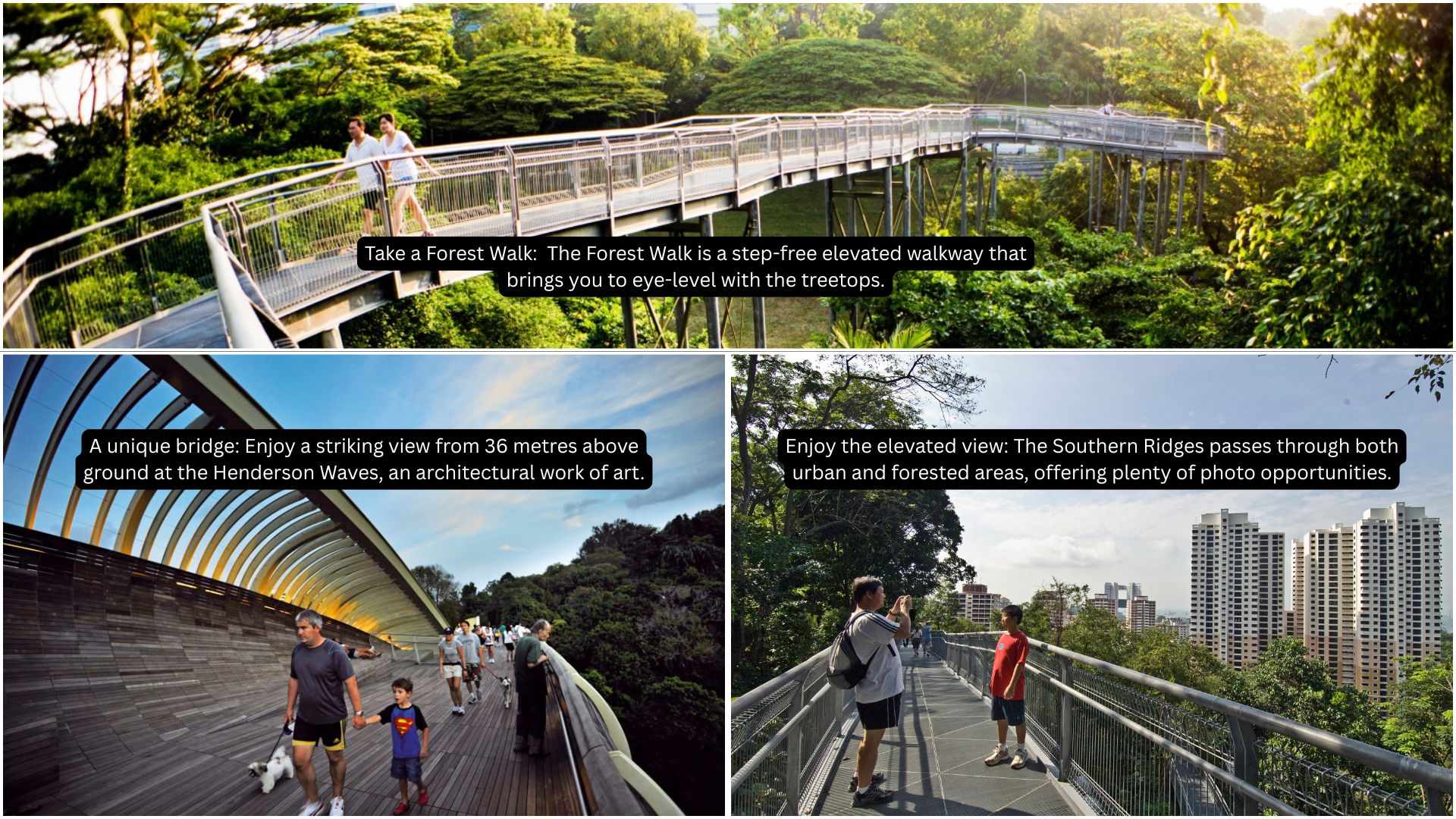
Source: URA
Value Growth in Rejuvenated Towns (2015–2025)
What This Means for Homeowners and Investors
Rejuvenated towns may not look like “new growth areas” on the map, but they quietly outperform in long-term holding value.
They blend familiarity and modernity, offering capital growth without volatility — a balance every homeowner or investor seeks.
So while everyone else looks for the next “new” thing, the next opportunity may be right where you already are — waiting to be rediscovered.
Next in the Series — Coming Soon
Part 3: Where Singapore Is Expanding Next — The New Development Areas Shaping 2030 and Beyond
Discover how Singapore’s boundaries are growing outward, and which regions will define the next decade of urban expansion.
Stay Updated
Don’t miss the next part of the Singapore 2030 Opportunities series. Subscribe to get insights, maps, and new launch updates directly to your inbox
Thank you for subscribing!
Have a great day!